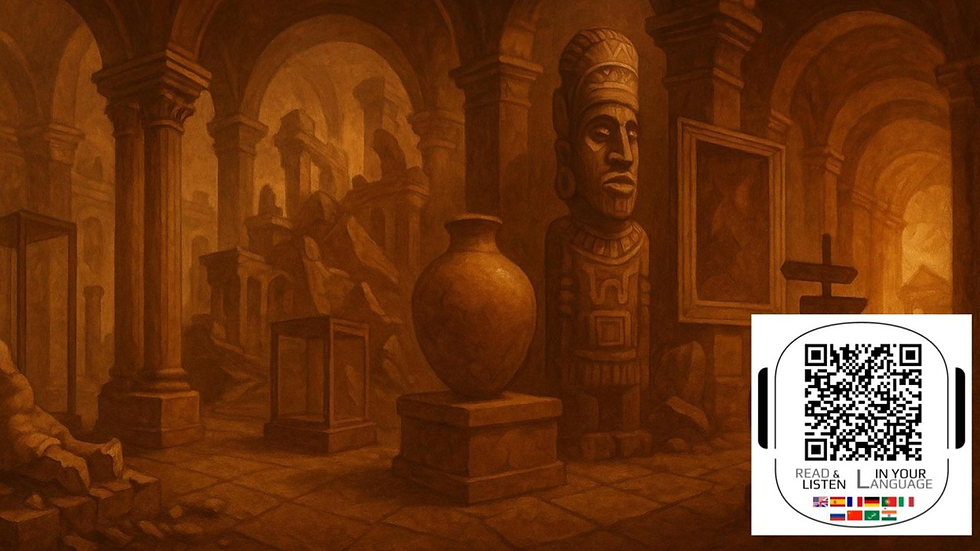Decolonizing Museum Narratives: Rethinking the Past
- carlo1715
- 13 ago
- Tempo di lettura: 3 min

Museums are more than buildings filled with objects. They are storytellers, powerful ones. For centuries, those stories have often been told from the perspective of the colonizers, framing history through the lens of dominance, conquest, and selective memory. Today, museums are being called to decolonize, to question who controls the narrative, whose voices are missing, and how to restore a more truthful and inclusive record. Decolonization is not a buzzword or a one-time project. It is a long-term commitment to rethinking the past in partnership with the communities whose histories are on display.
Beyond Labels: Confronting the Structures of Storytelling
Many museum collections were built during periods of empire, when objects were taken—sometimes violently, often without consent from their places of origin. These artifacts arrived stripped of their context, their meanings reframed to fit imperial narratives.
Decolonizing means:
Investigating and publishing provenance research transparently
Acknowledging the conditions under which objects were acquired
Rewriting interpretive texts to include multiple perspectives, especially those of source communities
It is a shift from presenting a single authoritative version of history to holding space for complexity.
Shared Authority, Shared Knowledge
True decolonization requires a rebalancing of power:
Co-curating exhibitions with community representatives
Creating advisory boards made up of members from the cultures represented in collections
Including Indigenous languages, oral histories, and spiritual contexts in interpretation
This is not about museums “giving a voice” to others. It’s about listening to voices that have always been there, and recognizing them as equal partners in knowledge creation.
Beyond the Walls: Community-Driven Practice
Some of the most powerful decolonizing work happens outside museum galleries:
Traveling exhibitions that return objects temporarily or permanently to their homelands
Public programs hosted in collaboration with local cultural centers
Digital storytelling projects led by communities themselves, where the museum acts as a platform rather than a gatekeeper
When communities define how their histories are told, museums become facilitators of cultural sovereignty rather than owners of culture.
Language as Liberation
The words we use matter. Colonial narratives often describe artifacts in ways that erase their living significance, referring to sacred items as “primitive,” “exotic,” or “curiosities.” Decolonizing means replacing outdated terminology with language that reflects respect, agency, and authenticity. This may also include integrating Indigenous naming systems and resisting homogenization, recognizing that cultural identities are diverse and dynamic.
Confronting Discomfort
Decolonizing work is rarely comfortable. It means confronting histories of violence, theft, and erasure, and being open to critique. It may also involve returning objects or refusing acquisitions that perpetuate harmful practices.
But discomfort is not failure. It is evidence of growth, accountability, and ethical alignment.
A Continuous Journey
Decolonization is not a destination. It is an ongoing process of reflection, restructuring, and relationship-building. It asks museums to:
Embed equity into governance and hiring practices
Redirect resources toward community-led projects
Measure success not only in visitor numbers but in trust restored and relationships strengthened
Conclusion: The Living Museum as a Decolonized Space
In the Living Museum of tomorrow, the past is not retold to glorify empire, it is reexamined to reveal the truth. Objects are not displayed as trophies, they are presented as cultural touchstones, with their stories told by those to whom they belong.
Decolonizing museum narratives is not about erasing history. It’s about liberating it, so that it can speak in full color, in many voices, and for all time.



Commenti